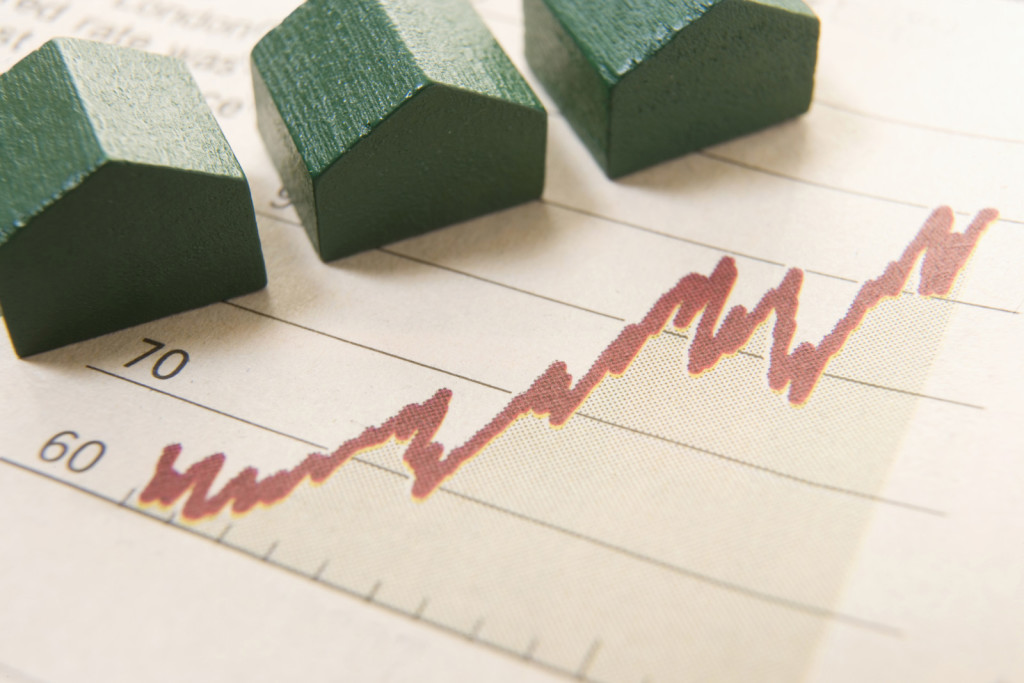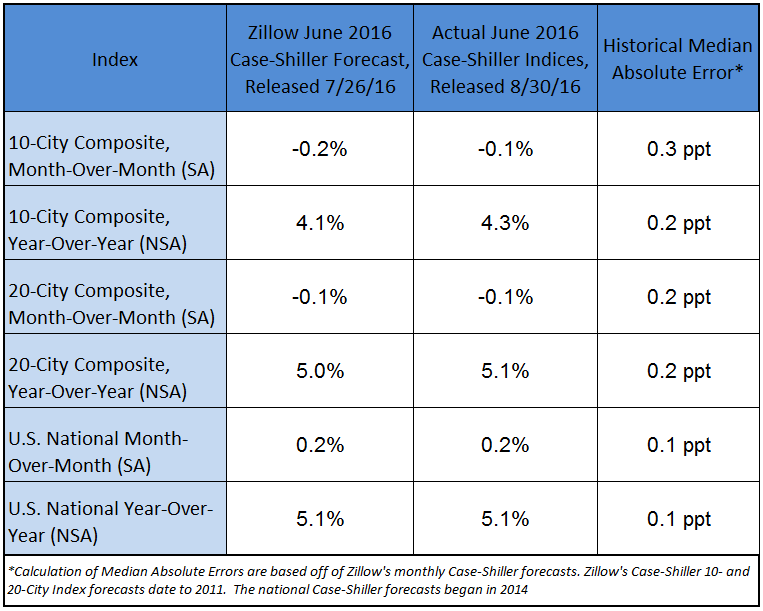June Case-Shiller: Steady Growth Has National Index Knocking on Door of 2006 Peak Levels


June Case-Shiller data revealed a national housing market continuing to grow at a steady annual pace in line with both prior months and with our expectations. Seasonally adjusted prices fell very slightly from May on both the 10- and 20-city indices.
Seasonally adjusted home prices in both the 10- and 20-city composite indices dipped 0.1 percent in June from May. Year-over-year, the 10-city index was up 4.3 percent and the 20-city index was up 5.1 percent. The annual rate of appreciation in both smaller indices has largely hovered near those levels, fluctuating up or down by mere tenths of a percentage point each month, since the beginning of the year.
Seasonally adjusted prices in the larger, national index were up 0.2 percent in June from May. On an annual basis, June Case-Shiller data showed the U.S. national index up 5.1 percent from June 2015 through June 2016, unchanged from May. According to a statement from S&P Down Jones, which publishes the S&P CoreLogic Case-Shiller Indices, the national home price index is just 1.2 percent below its July 2006 peak level. The 20-city index remains 8.1 percent off from its peak, while the 10-city index is 9.9 percent below its high recorded in mid-2006.
Below are Zillow’s forecasts of June Case-Shiller data, along with the actual June Case-Shiller numbers released today.
 The data from the first half of 2016 is in, and thus far, the relentless sellers’ market we’re in the midst of shows few signs of reversing. The overall inventory of homes for sale is way down, national home values continue to rise and those homes that are available to buy are selling seemingly as soon as they hit the market. But while the overall U.S. sellers’ market looks pretty well-entrenched, in some markets, conditions are slowly starting to change. In the once red-hot Bay Area, for example, annual home value appreciation has slowed from double-digit growth just a few months ago to levels closer to the national average. And in a handful of areas, including pricier markets like San Diego, inventory is starting to creep back up. As conditions in more local markets begin to shift and become more balanced between buyers and sellers, the national market will follow suit.
The data from the first half of 2016 is in, and thus far, the relentless sellers’ market we’re in the midst of shows few signs of reversing. The overall inventory of homes for sale is way down, national home values continue to rise and those homes that are available to buy are selling seemingly as soon as they hit the market. But while the overall U.S. sellers’ market looks pretty well-entrenched, in some markets, conditions are slowly starting to change. In the once red-hot Bay Area, for example, annual home value appreciation has slowed from double-digit growth just a few months ago to levels closer to the national average. And in a handful of areas, including pricier markets like San Diego, inventory is starting to creep back up. As conditions in more local markets begin to shift and become more balanced between buyers and sellers, the national market will follow suit.